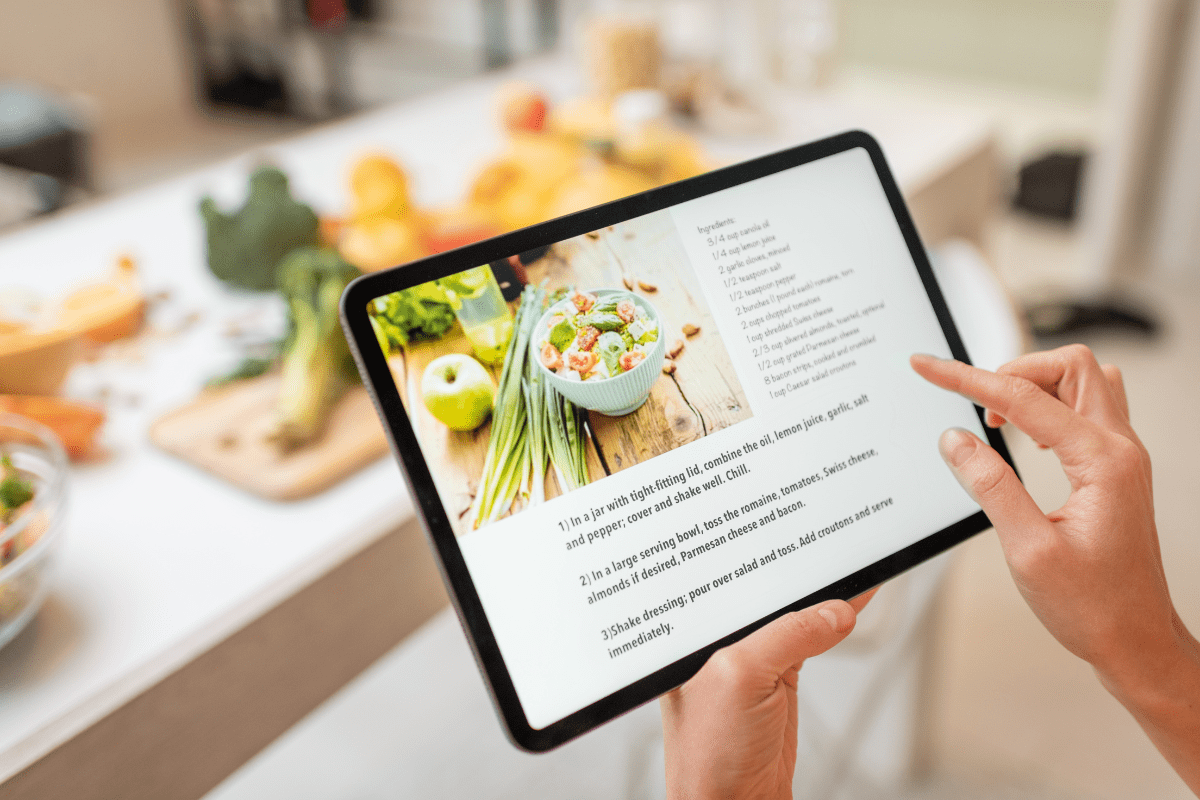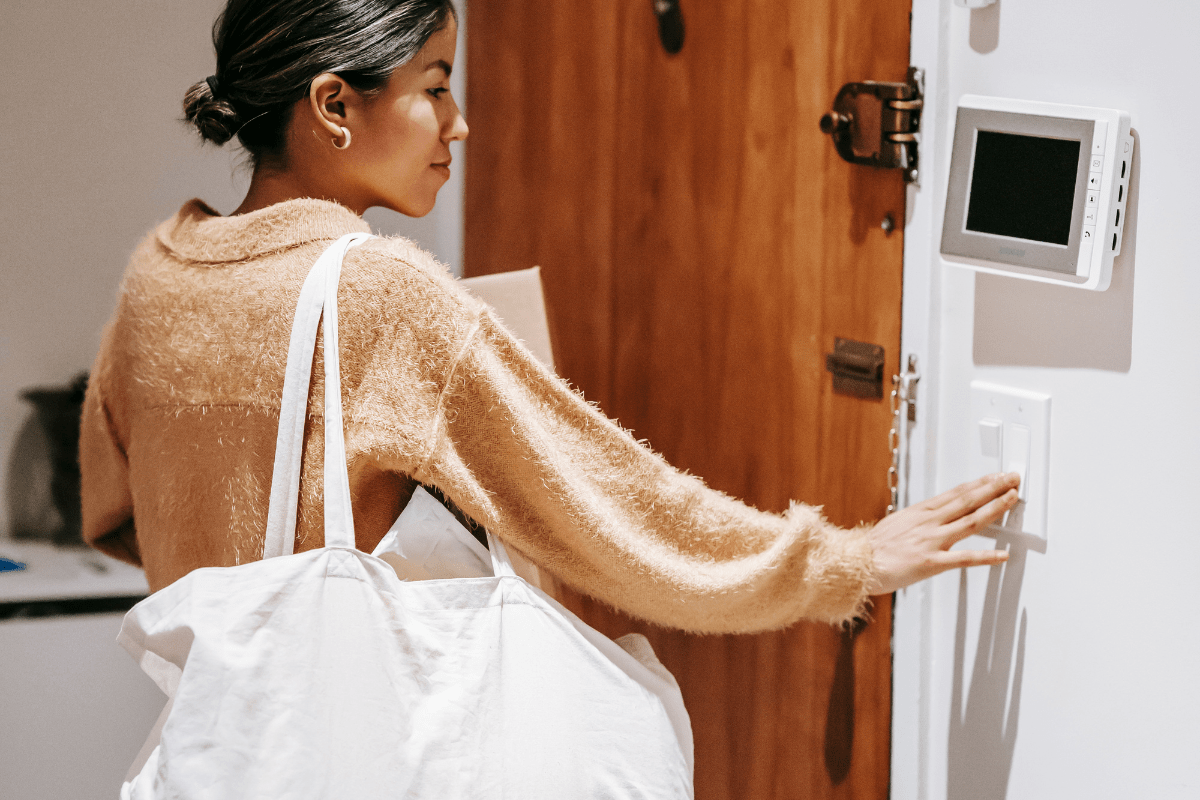We've all been there, standing in the kitchen at 6 PM, staring into the fridge, wondering how to make something healthy that doesn't taste like cardboard. After years of recipe fails and Sunday meal prep disasters, we've finally cracked the code on healthy eating that actually fits into real life. These aren't the perfect Instagram meals you'll never make twice, they're the recipes we actually cook on repeat because they taste amazing and don't require a culinary degree.
30-minute dinners that don't suck
Let's be honest, if a recipe takes longer than 30 minutes on a weeknight, it's probably not happening. These dinner winners have saved us from countless takeout orders and actually get better with practice.
One-pan Mediterranean chicken bowls
This recipe is basically foolproof, which is exactly what we need after a long day. Toss chicken thighs (trust us, use thighs) with olive oil, lemon juice, oregano, and garlic, then throw them on a sheet pan with diced zucchini, bell peppers, and red onion. Everything roasts together at 425°F for about 25 minutes while you decompress or help with homework.
The secret is cutting everything the same size so it cooks evenly. We learned this the hard way after serving perfectly cooked chicken with either mushy or still-crunchy vegetables too many times. Cherry tomatoes go on in the last 10 minutes because they turn to mush otherwise.
Serve over quinoa or rice with crumbled feta and a dollop of tzatziki. The kids will eat around the vegetables, but at least they're getting protein and you're not making three different meals.
Shrimp and zucchini "pasta"
Before you roll your eyes at another zucchini noodle recipe, hear us out. The trick is mixing spiralized zucchini with regular pasta in a 50/50 ratio. You get the vegetables without feeling like you're eating diet food, and the texture is actually pleasant instead of weird and squishy.
Heat olive oil in a large skillet, add minced garlic and red pepper flakes, then toss in the shrimp for about 2 minutes per side. Remove the shrimp, add the zucchini noodles to the same pan for literally 30 seconds (any longer and you'll have zucchini soup), then add back the shrimp with a splash of white wine or chicken broth and plenty of lemon juice.
The whole thing takes about 15 minutes, which is perfect because that's exactly how long the regular pasta needs to cook. Toss everything together with fresh basil and parmesan, and suddenly you've got a restaurant-quality meal that didn't break the bank or your schedule.
Sheet pan salmon with whatever vegetables you have
This is our go-to when we need something that looks fancy but requires minimal brain power. Season salmon fillets with salt, pepper, and lemon zest, then arrange on a sheet pan with vegetables tossed in olive oil. Asparagus, Brussels sprouts, sweet potatoes, broccoli… honestly, we've never found a vegetable that doesn't work. Check what's in season to get the best flavor and prices.
The timing is key: sturdy vegetables like Brussels sprouts and sweet potatoes need about 20 minutes, while asparagus and broccoli only need 12-15 minutes. Start the hearty vegetables first, then add the salmon and quick-cooking vegetables at the same time.
A compound butter made with herbs, garlic, and lemon juice makes everything taste gourmet. Just mash softened butter with whatever herbs you have on hand, plus minced garlic and lemon zest. It keeps in the fridge for weeks and transforms basic proteins into something special.
Make-ahead components that actually save time
Sunday meal prep doesn't have to mean eating the same sad container of food for five days straight. These components mix and match throughout the week, so you're not bored by Wednesday.
The protein rotation
Instead of cooking everything from scratch each night, we batch cook proteins that work in multiple meals. A big batch of seasoned ground turkey becomes taco filling, pasta sauce base, or lettuce wrap filling depending on what you add to it.
Versatile protein prep:
- Seasoned ground turkey or beef
- Grilled chicken thighs (more forgiving than breasts)
- Hard-boiled eggs for quick additions
- Baked tofu cubes with soy-ginger marinade
Store everything in separate containers and reheat portions as needed. The turkey and chicken keep for about four days, eggs last a week, and the tofu actually gets better after marinating for a few days. Invest in quality containers to prevent leaks and keep flavors from transferring.
Grains and vegetables that don't get weird
Not all grains reheat well, but quinoa, brown rice, and farro are practically indestructible. Cook a big batch on Sunday and use them throughout the week in bowls, salads, or as sides. They keep for about five days and actually taste better once the flavors have time to develop.
Roasted vegetables are game-changers for quick meals. Toss whatever needs to be used up with olive oil, salt, and pepper, then roast at 425°F until caramelized. They're good hot, cold, or room temperature, which makes them perfect for adding to grain bowls, scrambled eggs, or pasta. A simple meal planning app can help you organize which components to prep each week.
Smart ingredient swaps that don't taste like punishment
We've tried every healthy swap Pinterest has to offer, and most of them are terrible. These are the ones that actually work and don't leave you feeling deprived.
Swaps that actually improve the dish
Greek yogurt instead of sour cream is probably the easiest swap you'll ever make. It's tangier, has more protein, and works in literally every application where you'd use sour cream. We buy the big containers and use it for everything from taco toppings to salad dressings.
Mashed avocado works surprisingly well in chocolate baking recipes, but only in things like brownies where the texture is supposed to be dense. Don't try this in cakes or you'll end up with green, gummy disappointment. Trust us on this one. Learn to pick ripe avocados to avoid recipe disasters.
Nutritional yeast sounds weird but tastes like cheese and makes everything better. Sprinkle it on popcorn, pasta, or roasted vegetables for umami flavor without dairy. A little goes a long way, and it keeps forever in the pantry.
When to just use the real thing
Cauliflower rice is fine, but it's not rice and pretending otherwise just sets you up for disappointment. Use it when you want vegetables, not when you want rice. The same goes for zucchini noodles, they're great mixed with pasta but terrible as a complete pasta replacement.
Sometimes the full-fat, real version in a smaller portion is more satisfying than a weird substitute in a larger portion. A tablespoon of real butter on vegetables tastes better and keeps you more satisfied than a bunch of fake butter spray.
Lunch recipes that don't require reheating
Nobody wants to be that person heating up fish in the office microwave. These lunches taste better at room temperature anyway, which makes them perfect for desk eating or lunch meetings.
Mason jar salads that don't get soggy
The layering order matters more than any other part of this recipe. Dressing goes on the bottom, then sturdy vegetables like carrots and peppers, then grains or beans, then delicate greens on top. When you're ready to eat, just shake and dump into a bowl.
Our favorite combination is lemon vinaigrette, diced cucumber and bell pepper, chickpeas, feta cheese, and mixed greens. It tastes like a Greek salad and keeps for about five days, which covers the whole work week.
Make five jars at once using an assembly line method. It takes about 20 minutes total, which is less time than you'd spend driving to get lunch every day.
Lettuce wraps that don't fall apart
The secret to good lettuce wraps is using the right lettuce. Butter lettuce cups are pretty but flimsy. Iceberg lettuce leaves are sturdy enough to actually hold filling without tearing, and the crunch is part of the appeal.
Cook ground turkey with ginger, garlic, soy sauce, and a touch of honey until it's well-browned and slightly caramelized. Let it cool completely before assembling wraps, or the lettuce will wilt. Add shredded carrots, cucumber, and fresh herbs for crunch and flavor.
The sauce makes or breaks lettuce wraps. A simple peanut sauce with peanut butter, soy sauce, rice vinegar, and sriracha works with almost any protein and keeps the wraps from tasting dry.
Quick breakfast solutions for busy mornings
Breakfast is the meal most likely to get skipped when life gets crazy, but these options take less time than stopping for coffee and actually keep you full until lunch.
Overnight chia pudding variations
Chia seeds are having a moment because recent research shows they're even more nutritious than we thought. The basic ratio is three tablespoons of chia seeds to one cup of milk, but the flavor combinations are endless.
Easy chia pudding flavors:
- Chocolate-almond with cocoa powder and extract
- Berry-vanilla with frozen berries and extract
- Tropical with coconut milk and mango
- Peanut butter with natural peanut butter
Mix everything in mason jars Sunday night and grab one each morning. They keep for about five days and get thicker the longer they sit. Top with fresh fruit, nuts, or granola right before eating for texture contrast.
Five-minute veggie scrambled eggs
The frozen vegetable section is your friend for quick breakfast additions. Frozen spinach, peppers, and onions cook quickly and don't require any chopping at 7 AM. Add them to the pan first to cook off excess moisture, then add beaten eggs. Despite what you might think, frozen vegetables retain most of their nutrients and are often more convenient.
A dollop of cream cheese makes scrambled eggs impossibly creamy without cream or butter. Stir it in at the very end when the eggs are almost set, and they'll finish cooking gently in the residual heat.
Batch cook scrambled eggs on Sunday and reheat portions throughout the week. They keep for about four days and reheat in 90 seconds in the microwave. Add fresh herbs or hot sauce when reheating to brighten the flavors.
Snacks that feel like treats
The best healthy snacks are the ones that satisfy cravings without leaving you wanting something else 20 minutes later. These have enough protein and fat to actually keep you full.
Energy balls that don't taste like health food
The secret to good energy balls is using dates as the base instead of relying entirely on nut butter. Medjool dates blend into a caramel-like paste that holds everything together and provides natural sweetness.
Blend pitted dates with almond butter, vanilla, and a pinch of salt until smooth, then stir in rolled oats and mini chocolate chips. Roll into balls and refrigerate until firm. They taste like cookie dough but have actual nutritional value.
Three winning combinations:
- Chocolate-almond with cocoa powder and almonds
- Lemon-coconut with coconut and lemon zest
- Peanut butter-chocolate with natural peanut butter
- Carrot cake with cinnamon and raisins
Store them in the fridge for up to two weeks, though they never last that long in our house. They're perfect for afternoon energy crashes or pre-workout fuel.
Kitchen hacks that actually save time
These aren't revolutionary cooking techniques, just practical shortcuts that make healthy cooking less of a chore when you're already tired from everything else.
Equipment worth the cabinet space
An immersion blender is perfect for single-serve smoothies without the hassle of cleaning a full-size blender. It also works for making small batches of salad dressing or quickly blending soups.
Sharp knives make everything faster and safer. A dull knife requires more pressure and is more likely to slip, plus it turns chopping vegetables into a frustrating chore instead of quick prep work. Learn to sharpen knives properly or find a local sharpening service.
A good vegetable peeler is faster than a knife for most vegetables and creates more uniform pieces that cook evenly. The Y-shaped peelers work better than the traditional straight ones, especially for round vegetables like potatoes.
Shopping strategies that save sanity
Frozen vegetables aren't inferior to fresh, they're different. Frozen spinach works better in cooked dishes, frozen berries are perfect for smoothies, and frozen stir-fry blends eliminate chopping time on busy nights.
Worth buying pre-prepped:
- Pre-washed salad greens and spinach
- Pre-cut butternut squash and cauliflower
- Frozen vegetable blends for stir-fries
- Pre-cooked grains like quinoa and brown rice
Some conveniences are worth the extra cost when they mean the difference between cooking at home and ordering takeout. Calculate the true cost including your time and the health benefits of home cooking.
Making it actually sustainable
The biggest mistake people make with healthy eating is trying to change everything at once. Pick two recipes from this list that sound doable and master those before moving on to new ones.
Start with dinner since that's usually the most stressful meal to figure out. Once you have a few reliable dinner recipes in rotation, add breakfast or lunch options. Building slowly means you're more likely to stick with changes long-term.
Focus on adding good things rather than restricting everything you enjoy. Adding vegetables, protein, and whole grains to meals you already like is more sustainable than trying to eat completely differently overnight. The goal is progress, not perfection, and definitely not misery disguised as health food.





